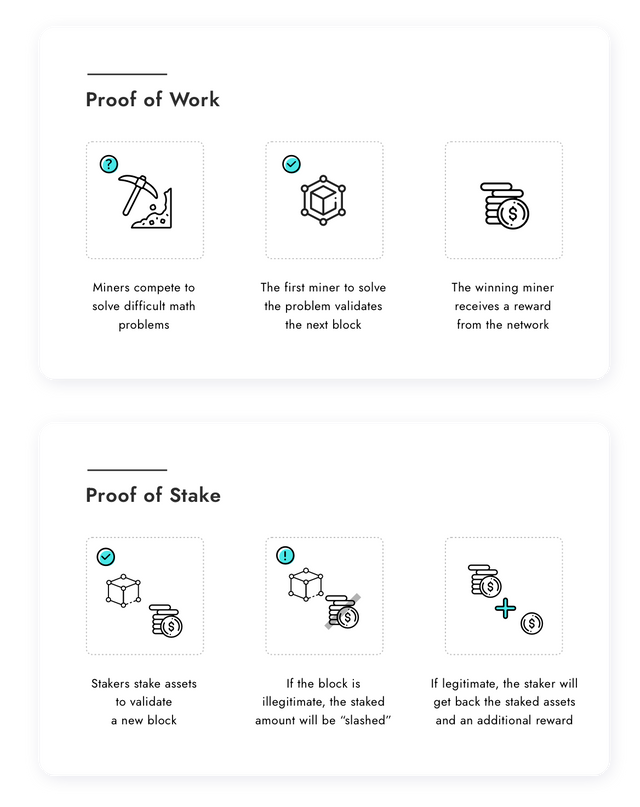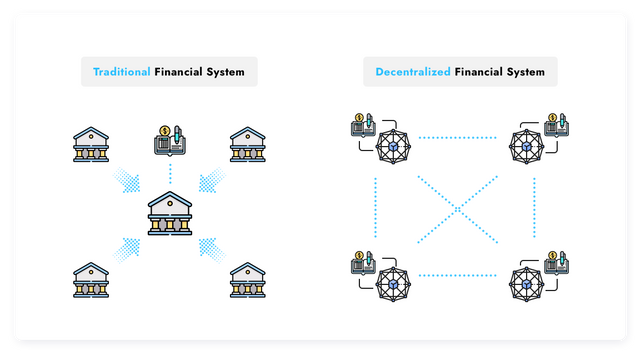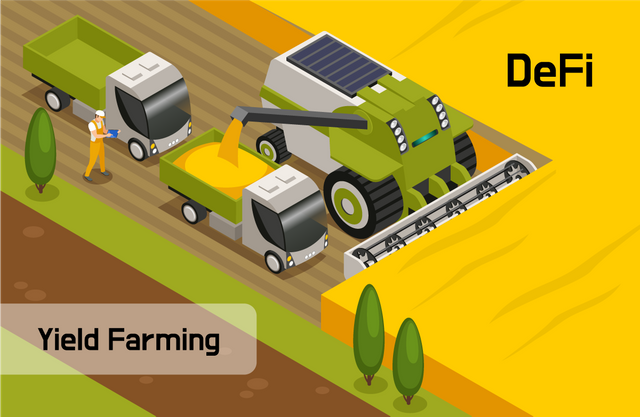Good morning. This is Editor P of Team Protocon.
In this research, we will try to explain the token deposit structure and reward structure. There are three keywords that will appear today: staking, CeFi and Yield farming. Let's take a look at the differences between these three words.
First, let's start with the concepts of deposit and staking, which are often used interchangeably.
Although deposit and staking are often used interchangeably, they are completely different concepts. The difference between the two is based on whether or not the interest accrues on a pure blockchain.
- For deposit commodities, interest is covered by the deposit service provider through arbitrage. On the other hand, staking interest is paid in return for depositing cryptocurrencies by customers on the blockchain network.
- Normally, the deposit is operated in the same way as the maturity savings account with the deposit period and interest rate set in advance. On the other hand, staking is similar to the concept of a general savings account where the interest rate is usually variable, and the deposit and withdrawal of assets are free.
What is Staking? (PoW vs PoS)
Staking refers to the act of depositing cryptocurrency into the network in the PoS ecosystem and receiving interest through contributing to the security of the blockchain.
In the same way that a block reward is paid for verifying data through mining in a proof-of-work (PoW) model like Bitcoin, PoS blockchain pays rewards when participating in staking.

The history of staking has changed over the course of 9 years, starting in 2012 and ending in 2021. Starting with Peercoin, the first PoS project, in 2012, a number of projects such as Ethereum, EOS, Tezos, Tron, Polkadot and Cosmos emerged. Based on the PoS and DPoS consensus algorithm, it has established itself in the DeFi market by inducing individual users to staking and promoting a staking pool similar to a mining pool.
A proof-of-work (PoW) blockchain like Bitcoin adds new blocks to the blockchain based on mining. On the other hand, a proof-of-stake (PoS) blockchain creates and verifies new blocks through a staking process. This is how the participant who stakes a larger quantity is selected as the next block validator.
How are staking rewards different?
Then since we briefly covered the operating principles, shall we take a look at how the staking rewards are calculated? Each network has a different way of calculating staking rewards.
However, the payment is made considering the following factors.
.png)
[Image Credit: CryptoProfile (Crypto Staking Platforms & Taxes)]
- Amount of coins staked by validators
- How long the validator has enabled staking
- Amount of coins staked throughout the network
- Inflation rate
- Etc.
In some networks, the stake reward ratio is fixed. This is an inflationary reward, to encourage users to use coins rather than to hold them and to increase the use of cryptocurrency. When the rewards are paid at such a constant rate, the validator has the advantage of being able to predict the staking rewards they will receive in advance.
The rise of CeFi
As the demand for staking increases, a concept similar to staking is born in the CeFi realm, led by the large exchanges. CeFi deposit products that pay interest when depositing tokens are popping up. Many companies use CeFi and staking interchangeably, but they are different terms.
CeFi is an acronym for Centralized Finance. In the case of CeFi deposit products, they are conducted off-chain rather than on-chain, and the algorithm and governance of the interest rate are often private, so it can be seen as similar to the asset management area.

Liquidity Mining, a concept that you reward from the network in return for providing liquidity, drew keen attention with the establishment of the Fcoin exchange in the first half of 2018. The success of the Fcoin exchange has led to a series of exchanges similar to the Fcoin exchange. However, Fcoin, which has been criticized for being a typical Ponzi model from the start, has experienced a trading volume plunge from about $17.4 billion in August 2018 to about $170 million. Finally, in February 2020, the company announced bankruptcy with about 1.22 billion dollars of damage.
- Ponzi: An abnormal act of repaying an existing loan without repaying it with the return on investment.
The beginning of Yield Farming
Mining Exchange was on the decline due to the failure of Fcoin, but in June 2020, the liquidity mining model suddenly reappeared in the DeFi ecosystem. Mining Exchange was on the decline due to the failure of Fcoin, but in June 2020, the liquidity mining model suddenly reappeared in the Defi ecosystem. Starting with Compound's COMP token issued in June 2020, methods have been devised to make maximum profits in the DeFi area.
Following compound, several projects have emerged to implement token distribution based on liquidity contributions, and the DeFi protocol has called the act of issuing its own tokens under the name of governance tokens and efficiently earning profits from them "Yield farming."
DeFi Yield Farming is the concept of obtaining interest and compensation when the user of the DeFi platform provides liquidity (deposit of digital cryptographic assets). Interests are compounded each time a block is created, and rewards are issued and paid in the quantity and token promised to network participants.
Staking vs. DeFi Staking(Yield Farming)
The term "staking" comprehensively describes the interest rates that can be obtained when deposited in a DeFi protocol. However, this term is used in many places rather than in clear meaning.
The most important thing about staking is that in addition to the phenomenon of depositing tokens to earn interest, the locked-up tokens actually contribute to the security of the chain. There is a big difference that users who deposit tokens play the role that miners used to play.
In contrast, DeFi staking(Yield Farming) issues and distributes new tokens when deposited, or values new tokens by mining based on liquidity. This is also accompanied by token deposits, but the contribution to the security of the blockchain can be seen as a limited meaning of staking.
Liquidity pool of Yield Farming
Yield Farming is simply freezing cryptocurrency and getting compensation for it. Those who are called liquidity providers work by adding funds to liquidity pools, so what is liquidity pools?
- Liquidity pools are smart contracts that hold funds.
- Liquidity providers are rewarded for supplying liquidity (mainnet tokens) to the pool. This compensation may be paid from fees incurred on the platform.
- Some liquidity pools reward multiple tokens, not just one. One example is that it is paid as a separate token rather than as a mainnet token.
- Liquidity providers can deposit new tokens received as compensation in another liquidity pool and receive compensation in return.
This process is called Yield farming since it is similar to farming.

So today we've looked at the different concepts and deposit and reward structures derived from staking and staking.
Next time, we will discuss in-depth KLAY token deposits and swaps. Please look forward to it.
Official Protocon Links
Telegram
Twitter
Facebook
Youtube
Medium
Reddit
Github